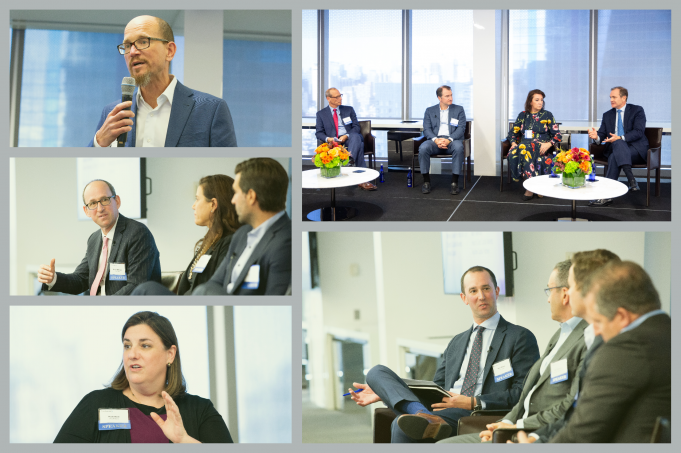Last week, we welcomed approximately 200 clients, colleagues and industry experts to our office for our third annual Private Credit Summit. The event marked the Summit’s long-awaited return to an in-person format and offered stakeholders across the industry an opportunity to hear from leaders in the space and network with their peers.
Over the course of the day, speakers from the private credit, private equity, restructuring and legal industries discussed the latest trends in the market and shared their outlook for growth in this rapidly changing and highly uncertain environment.
Here are a few takeaways:
- Private Credit Will Continue to Grow. The asset class is resilient, serves a growing market need, and is here to stay. And, while the private credit market is expected to grow, the syndicated market isn’t going anywhere and companies that can access both markets will likely consider each one when they need to raise capital.
- Now is a Good Time to Invest. While there are fewer deals in the market, the pendulum of deal terms has swung in favor of lenders. Pricing is up and leverage is down. Documents are getting tighter and for the right situation, lending is attractive. Expect to see more add-on acquisitions as lenders are more willing to invest in businesses they already know.
- Markets are Cyclical. As the saying goes, “what goes up, must come down,” and the market has been up for quite a while. Defaults are a natural part of the economic cycle and will bring more discipline to the market.
- This is Not 2008 or 2020. The recessions in 2008 and 2020 had distinct catalysts, but this time it’s markedly different. We are witnessing a slow motion car crash and private equity firms and lenders that engage in early, active and sustained dialogue with each other about the portfolio companies they finance will be best positioned to weather the storm.
- Liquidity is Key. Balance sheets are the healthiest they’ve been as compared to other historic periods of economic crisis. However, uncertainty around the timing and duration of a recession makes portfolio management challenging. As a result, companies will need to maintain a healthy level of liquidity as lack thereof – and not tripped financial covenants – will trigger the next wave of restructurings.
- Interest in ESG is Growing. LPs are asking questions and lenders are considering ESG attributes when making investments. But unlike in Europe, the industry in the U.S. isn’t all-in just yet. There is no uniform set of metrics and no consensus on how to measure them, and that will take time to clear up.
- Direct Lenders Aren’t Playing Favorites. When liquidity is needed in respect of a particular credit, direct lenders – for the most part – are offering the opportunity to deploy capital to all lenders and, thanks to changing structures, CLOs are more often able to participate. Given the “clubby” nature of the private credit market and the relative tightness of documents, it is unlikely that we will see a wave of lender-on-lender violence.
- Be Proactive. As distress begins to creep into portfolios, there is a greater need for direct lenders to be more proactive in managing those portfolios. At the first sign of distress, lenders should thoroughly review their original investment thesis, borrower liquidity and the relative tightness (or weakness) in their loan documentation.
- It’s Time to Expand Your Network. Lenders are lending less money per deal, so in order to raise the same amount of capital for a transaction, more lenders are needed. Recognizing this, private equity sponsors are expanding their networks, and engaging with more lenders than ever before.
- PE’s Advice to Direct Lenders. Deliver what you say, when you say you will. Standing by your word will not only win you a deal but create deep and long-standing relationships for years to come.

Agenda & Speakers

